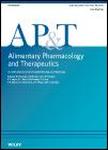版权所有:内蒙古大学图书馆 技术提供:维普资讯• 智图
内蒙古自治区呼和浩特市赛罕区大学西街235号 邮编: 010021

作者机构:Ctr Dis Control & Prevent CDC Natl Ctr Emerging & Zoonot Infect Dis Div Preparedness & Emerging Infect Arctic Invest Program Anchorage AK USA Alaska Nat Tribal Hlth Consortium Liver Dis & Hepatitis Program Anchorage AK USA CDC Div Viral Hepatitis Natl Ctr HIV AIDS Viral Hepatitis STD & TB Prevent Atlanta GA USA
出 版 物:《ALIMENTARY PHARMACOLOGY & THERAPEUTICS》 (营养药理学与治疗学)
年 卷 期:2016年第43卷第11期
页 面:1197-1207页
核心收录:
学科分类:1007[医学-药学(可授医学、理学学位)] 1002[医学-临床医学] 10[医学]
基 金:National Institutes of Health, NIH, (U01PS004113) National Institutes of Health, NIH
主 题:Chronic Hepatitis B Hepatitis B virus Human-centered computing Carcinoma
摘 要:BackgroundHepatocellular carcinoma (HCC) risk after resolving chronic hepatitis B virus (HBV) infection is unclear. AimTo compare HCC risk between Alaska Native (AN) patients with and without hepatitis B surface antigen (HBsAg) seroclearance. MethodsWe selected persons with (case-patients) and without (control-patients) HBsAg seroclearance from a cohort of 1346 chronically HBV-infected AN patients followed during 19822013. We attempted to match two control-patients/case-patient on sex, HBV genotype, and age. Person-years of follow-up for case-patients began on the date of HBsAg resolution and for control-patients began on the date equivalent to the cohort entry date plus the years of HBsAg duration for their corresponding case-patient. We compared HCC risk using a Cox proportional hazards model. ResultsThe 238 case-patients (4 with HCC) and 435 control-patients (9 with HCC) were similar in age [P-value (P) = 0.30], sex (P = 0.53) and HBV genotype (P = 0.99). Case-patients had longer person-years of follow-up than control-patients (11.7 vs. 10.1 years;P = 0.04). The HCC rate/100 000 persons was similar between case- (132) and control-patients (178;P = 0.65). The adjusted hazard ratio comparing case- and control-patients was similar for HCC [0.7;95% confidence interval (CI): 0.2-2.4], increased for each 1-year increment for age (1.1;CI: 1.0-1.1;P 0.01), and was greater if the initial HBeAg was positive (3.5;CI: 1.1-11.0;P = 0.03). ConclusionsHepatitis B surface antigen seroclearance was not associated with reduced HCC risk;the HCC risk estimates are limited by wide 95% confidence intervals. Persons meeting HCC surveillance indications prior to HBsAg seroclearance could benefit from continued surveillance after seroclearance.